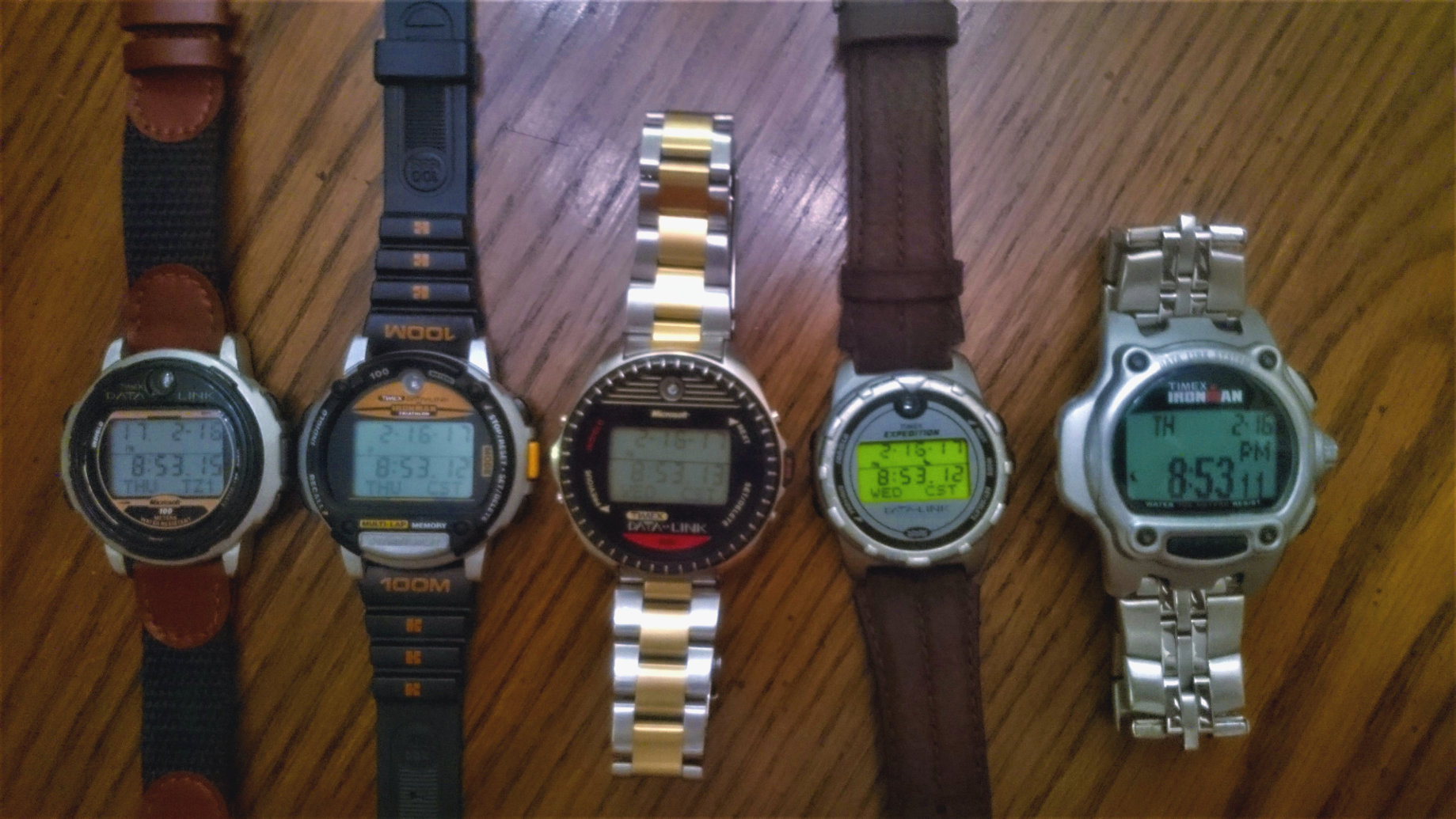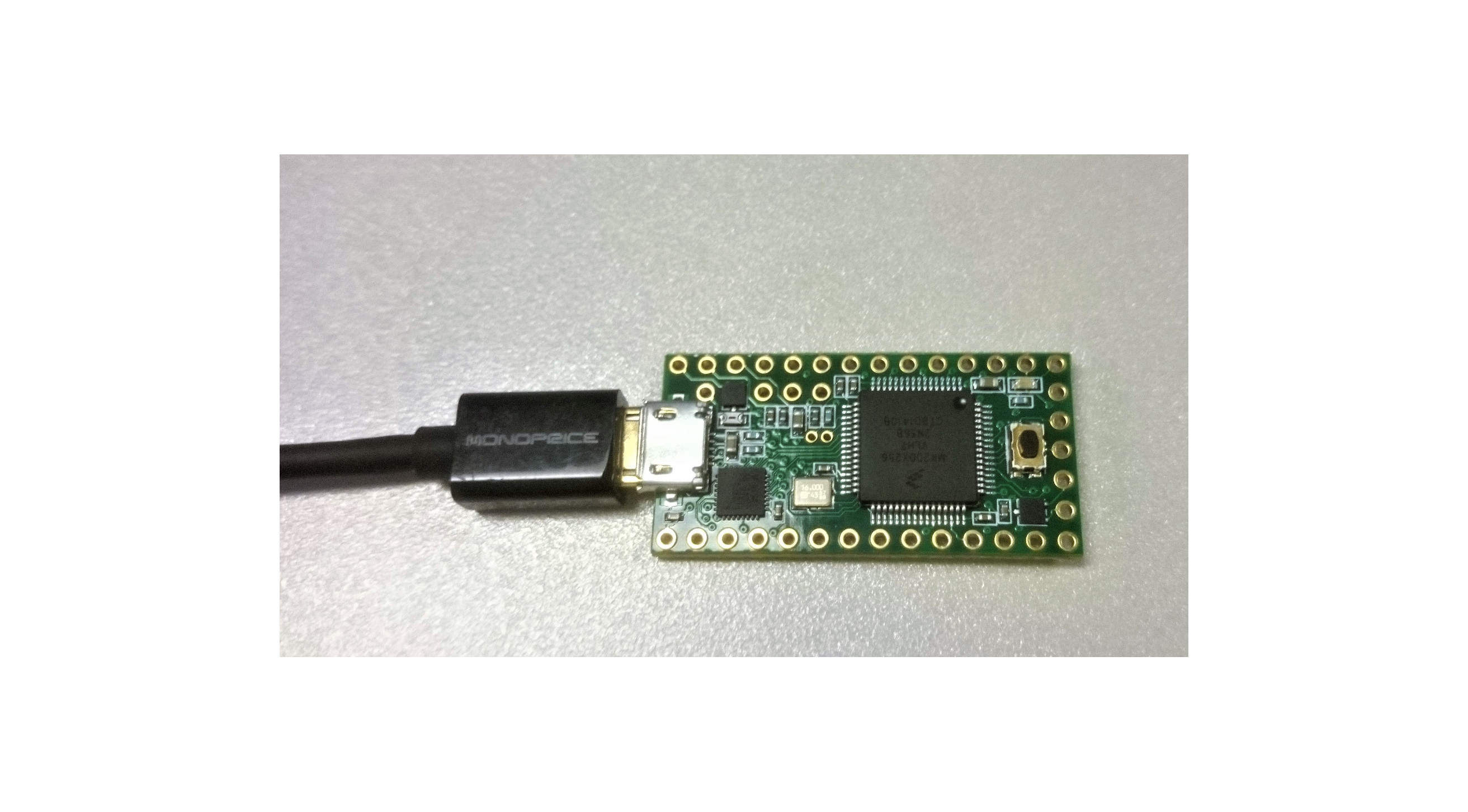Timex Datalink
When I was a kid I loved the different Timex sports watches. It was some of the coolest technology at the time to have a small microprocessor running on your wrist. I don't know when I first saw an ad for the Timex Datalink watch but I knew I had to have one. My first Datalink watch was a gold-colored 150 model. It was large, gold, and shiny and I was proud to show it off.
The original Timex Datalink watches used a small IR sensor on the front that would read serial data sent to it from a computer. The computer would flash a bunch of white lines on your CRT monitor with a specific timing rate while you held the watch up to the screen. This took advantage of the CRT refresh timings with some clever programming. It was fun to watch the white bars go across and hear the beeps of the watch reporting that it got the data. There is even a patent with drawings on how this works: https://www.google.com/patents/US5652602
 Datalink Patent Drawing
Datalink Patent Drawing
The original Datalink watches were limited in terms of I/O. Things like Bluetooth or high-resolution displays weren't possible at the time. This meant that the things to experiment with were mostly limited to setting alarms and adding appointments. Despite this, it was awesome and completely worth it!
In some sense the Datalink was the first smart-watch but it totally depends on your definition of smart-watch. The CRT monitor programming trick was a real wireless link even though it required line-of-sight and was single-directional. The Timex / Microsoft (yeah Microsoft was involved) software provided a simple GUI for inputting your watch data.
Timex later released a Datalink watch that had a USB connection. This allows two-way communication. So if you change something in your watch, it can sync back to the computer. It also had software that would allow for Microsoft Outlook synchronization. Having a USB connection was much nicer but there is still something awesome about reading lines flashing on the monitor.
My Collection
Lately, I've dug up my own Datalink watches and gotten the urge to get them back running again. Sadly, my original 150 watch has problems with it that I haven't been able to repair yet. The LCD zebra strips either have a fault or the connection pads aren't making good contact. This means some segments of the display don't work. I also happened to bend the back of the watch-case which damaged the peizo element when trying to open and close the watch. I must have opened and closed it too much and too hastily while working on repairing the LCD.
My original USB Datalink is in fine shape and I bought several other Datalink watches off of ebay to make up for my broken 150. Here is what my current collection looks like.

My Datalink collection. The order of the watch models from left-to-right are: 70, Ironman, 150, 150s, Ironman USB.
Running MCU Code
I haven't done much with programming the MCU on the watches. Some clever programmers did some work to reverse-engineer the original Datalink watches but Timex was nice enough to release a SDK for the Ironman USB (https://assets.timex.com/developer/datalink/). There aren't a lot of good use-cases for writing code for these watches due to the limited MCU and LCD. It still could be fun to tinker with.
Serial Programming
Because CRT monitors aren't common anymore and it depended on some really old software, it is quite a challenge to have a good system to program the Datalink watches. Timex had a laptop adapter they made in order to program the watches on a laptop that had an LCD screen. The adapter has a serial port connector along with a LED that blinks with the same timing that the CRT would. These adapters are in high demand and often go for a large amount of money on ebay.
While it would be possible for me to reverse engineer the CRT programming timing for the Datalink and try to reproduce it, it is much easier to go off of the work of others. The difficulty there is many of the early Datalink interest web pages don't exist anymore. Thanks to the Internet Archive I was able to find code that someone wrote that talks to the watch via a LED attached to a serial port. I got this partially working but it was pretty flaky and would often result in programming errors.
After a desperate attempt at scouring the web for a solution, I finally found something that didn't require me to do significant work from scratch. There is a very nice github repo of https://github.com/dfries/datalink_ironman that not only includes a Linux application for talking to the serial port for programming the watch but also a MCU application for running on the Teensy (https://www.pjrc.com/teensy/) board. Unlike the serial port to LED connection, this has run really solid for me. It is a near-perfect programming solution.
Running the datalink_ironman code on a Teensy is quite a bit cheaper than trying to acquire a Timex official laptop adapter off of ebay. Also because it works with a Linux command-line application instead of the Windows 3.1 GUI application is is much more useful and versatile too.
 Teensy Datalink programming cable. Not as fun as a CRT but it works!
Teensy Datalink programming cable. Not as fun as a CRT but it works!
More Restoration
I'm not sure yet how much more I will do with my Datalink project. Some of the watches I got off of ebay came in pretty bad shape. I've replaced the wrist straps of all of them. I tried to match the original wrist straps as much as possible but that is really hard to find. The 150 / 150s has a nice glass lens but most of the watches are plastic lenses. I've been successful at polishing the scratches out of the plastic though and have a nice shine.
I haven't decided if I am going to try to attempt a paint restoration on the watches that has had paint has worn off. It is pretty impossible for me to match the existing color but I might be able to find something close. There is always the risk I will end up with a paint job that I am unhappy with and am unsure what to do.
I still have a chance to resurrect my old 150 watch. This has nostalgia and emotional appeal to me but has been quite frustrating so far. The zebra strips for the LED are flaky but I might be able to find a way to get contact with some really delicate work. It should be possible to bend the watch back into mostly the original shape but the piezo element is completely damaged. I haven't yet figured out if I can re-use a piezo disc element and find a way to mount it on the back of the watch cover.
Not only are the old Datalink watches cool from a nostalgia perspective, they are just generally interesting technology. They also easily outmatch today's smartphones as they can run for years on the same 3-volt battery. They don't deserve to be lost to history. Maybe someday something similar will be made again.